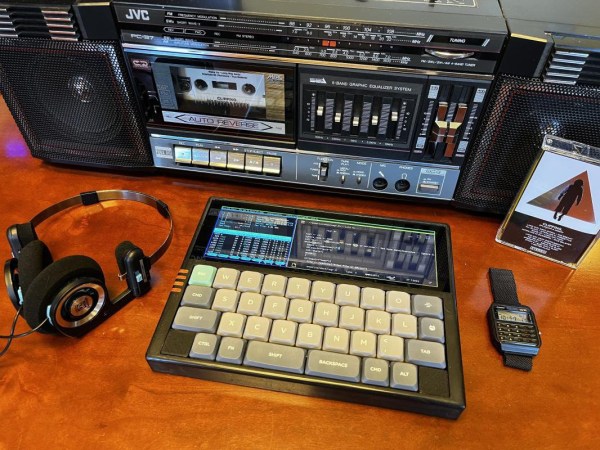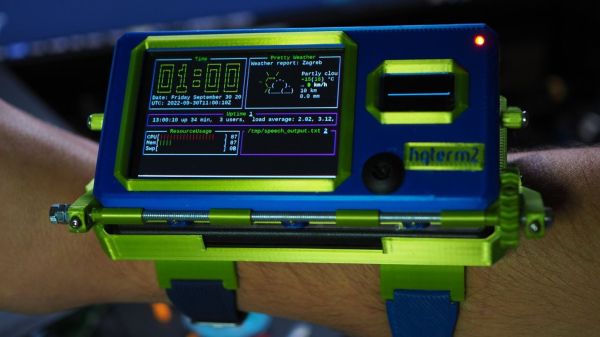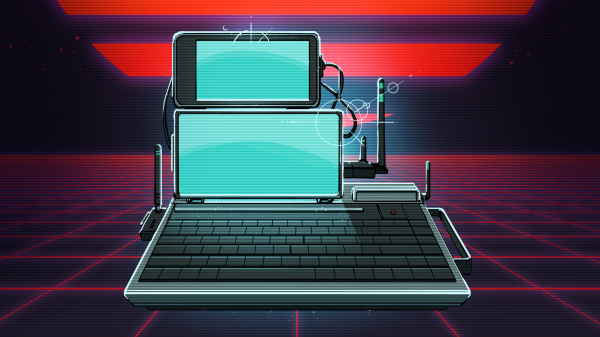The slabtop form factor has had a resurgence in the cyberdeck community, and [Greg Leo] has designed the QAZ Personal Terminal to be about as small as a slabtop could be while still having full-sized keys.
Since the device is using a 35% QAZ keyboard as its primary input device, [Leo] has helpfully given a quick overview of how text is input in the video below. Coupled with that surprisingly popular 4:1 LCD screen we’ve seen elsewhere, this cyberdeck looks like a modern interpretation of a TRS-80 Model 100. The Banana Pi powering the QAZ Personal Terminal is running Debian with spectrwm, a tiling window manager making arranging windows a breeze with either a mouse or keyboard. The integrated mouse layer on the keyboard means you don’t need a separate mouse at all if you don’t want to spoil the 1980s mobile chic.
[Leo] has another video all about doing calculus on this cyberdeck with the math shortcuts integrated into the keyboard. Fractions, exponents, and common Greek letters are demonstrated. We can see this being a really great note-taking device for engineering and math courses if you wanted something more portable than a laptop.
It’s hard to get very far hacking without a little math. For more math-focused input devices, check out the Mathboard or the MCM/70.
Continue reading “2022 Cyberdeck Contest: QAZ Personal Terminal”







 [Rob] has been focusing on day-to-day usability first and foremost, with pleasantly clicky encoders, impeccable performance of its watch duty, unparalleled expandability, and comfortable wrist fit — it provides a feeling no commercial wearable could bring.
[Rob] has been focusing on day-to-day usability first and foremost, with pleasantly clicky encoders, impeccable performance of its watch duty, unparalleled expandability, and comfortable wrist fit — it provides a feeling no commercial wearable could bring.










